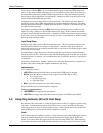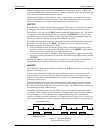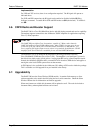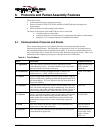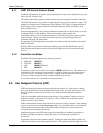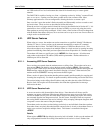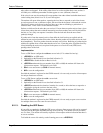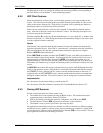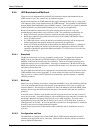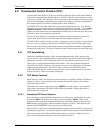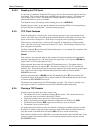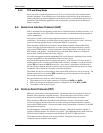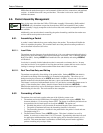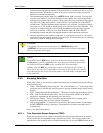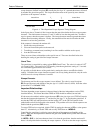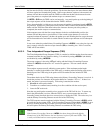
Feature Reference DART 300 Modem
Page 42 2110212 Rev 1.0
6.2.4. UDP Broadcast and Multicast
These services are implemented in the DART 300 modem but require implementation by the
CDPD carrier as well. Few carriers have provided this support.
Broadcast and multicast are CDPD functions that support sending the same data to a large group
of IP Addresses with a single transmission to the CDPD network. This capability is implemented
through Mobile Data Intermediate System (MDIS) software. Check with your carrier to determine
if these capabilities are offered before planning to use it as part of your application.
Broadcast and multicast transmissions are point-to-multi-point and provide a one-way,
unacknowledged connectionless service similar to UDP. The operational considerations are:
• Protocol restrictions prevent broadcast or multicast messages from being encrypted.
• Broadcast or multicast data packets will not be received by a DART 300 modem with an
active TCP PAD session.
• If a UDP PAD session is active the broadcast and multicast messages will be interspersed
with the application data packets and must be separated by the application.
• In the case of SLIP, the disposition of the broadcast and multicast messages is a function of
the support provided by the software stack and end-user applications (one must be UDP)
operating on the Mobile Application Subsystem (MAS). If a UDP session is not active, the
messages will be lost.
6.2.4.1. Broadcast
The Broadcast function is used on a geographic coverage basis. To support this function the
MDIS is set up with a Broadcast NEI that includes a list of the Mobile Data Base Stations
(MDBSs) in the desired broadcast area in its definition. There can be multiple broadcast areas
within the coverage area of a single MDIS. A message is transmitted to a Broadcast NEI at the
MDIS that replicates the message, puts a special broadcast header on it, and sends it to the MDBSs
indicated by the broadcast list.
For most applications broadcast is not appropriate, because broadcast messages are sent to all the
CDPD modems in the covered geography. It is more useful to be able to specify that messages
only go to all, or a subset of the IP Addresses associated with a specific customer; a capability
offered by multicast.
6.2.4.2. Multicast
Multicast is set up similarly to broadcast, except that the MDIS is set up with a Multicast NEI and
a list of the terminals that belong to that specific group rather than a list of cells, as used by the
broadcast function. The message to be multicast is sent to the Multicast NEI at the MDIS, which
replicates the message and sends individual messages to the terminals indicated in its multicast
group list.
A terminal can be a member of any number of multicast groups, however it can only be active in
one at any given time. A terminal wishing to receive multicast messages indicates its readiness by
registering a Multicast NEI and by being ready to receive UDP datagrams. The latter can be
accomplished by having the UDP Server function set to active, or if in SLIP mode, by having a
UDP application set to ready. In all of the preceding cases the local host application is assumed to
be ready to process any incoming multicast datagrams.
Contact the service provider for information on the availability and use of multicast service in
your area.
6.2.4.3. Configuration and Use
The mechanism to configure and use the DART 300 for UDP broadcast and multicast will be
described in an application note at a later date. Check the Sierra Wireless website from time to
time for additional information.



